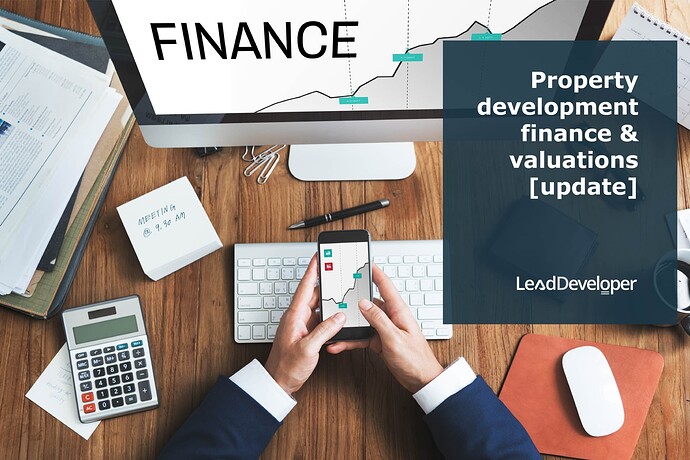Bonus Update - Finance and Valuations
 Summary
Summary
 Understanding Development Finance – The video covers various financing options, how banks assess loans, and strategies for securing development funding.
Understanding Development Finance – The video covers various financing options, how banks assess loans, and strategies for securing development funding. What Banks Look for in a Loan Application – Banks assess borrower credibility, project feasibility, financial reports, and risk mitigation strategies before approving finance.
What Banks Look for in a Loan Application – Banks assess borrower credibility, project feasibility, financial reports, and risk mitigation strategies before approving finance. Key Types of Loans – Retail finance, commercial finance, bridging loans, mezzanine finance, and non-recourse loans are discussed with their pros and cons.
Key Types of Loans – Retail finance, commercial finance, bridging loans, mezzanine finance, and non-recourse loans are discussed with their pros and cons. Risk Mitigation Strategies for Banks – Banks use pre-sale requirements, loan-to-value ratios (LVR), and developer guarantees to mitigate financial risks.
Risk Mitigation Strategies for Banks – Banks use pre-sale requirements, loan-to-value ratios (LVR), and developer guarantees to mitigate financial risks. Developer Cash Flow & Equity Planning – Importance of structuring finances to maintain liquidity, reduce holding costs, and secure pre-sales to maximize returns.
Developer Cash Flow & Equity Planning – Importance of structuring finances to maintain liquidity, reduce holding costs, and secure pre-sales to maximize returns. How to Prepare a Strong Loan Application – Developers should present project reports, feasibility studies, risk management plans, and financial projections to impress lenders.
How to Prepare a Strong Loan Application – Developers should present project reports, feasibility studies, risk management plans, and financial projections to impress lenders. Importance of Development Valuations – How valuations impact loan approvals, how to get favorable valuations, and why project-related site value matters.
Importance of Development Valuations – How valuations impact loan approvals, how to get favorable valuations, and why project-related site value matters. Methods of Property Valuation – Different valuation methods including income capitalization, discounted cash flow (DCF), and residual value assessment.
Methods of Property Valuation – Different valuation methods including income capitalization, discounted cash flow (DCF), and residual value assessment. Strategies to Minimize Holding Costs – Using longer settlement periods, negotiation tactics, and option agreements to reduce upfront costs.
Strategies to Minimize Holding Costs – Using longer settlement periods, negotiation tactics, and option agreements to reduce upfront costs. Case Studies on Securing Large-Scale Funding – Insights from real-world projects where finance was arranged with minimal personal equity injection.
Case Studies on Securing Large-Scale Funding – Insights from real-world projects where finance was arranged with minimal personal equity injection.
 Insights Based on Numbers
Insights Based on Numbers
 First Development Project – A developer secured a $4 million loan for a 9-apartment building without prior experience.
First Development Project – A developer secured a $4 million loan for a 9-apartment building without prior experience. Construction Loan Arranged Without Pre-Sales – A 2015 project in Brisbane was fully funded by Westpac without pre-sales, demonstrating strong financing strategies.
Construction Loan Arranged Without Pre-Sales – A 2015 project in Brisbane was fully funded by Westpac without pre-sales, demonstrating strong financing strategies. Commercial Loan Repayment Strategy – Loan-to-value ratios (LVR) are generally 60-75% of the project’s gross realization value (GRV).
Commercial Loan Repayment Strategy – Loan-to-value ratios (LVR) are generally 60-75% of the project’s gross realization value (GRV). Importance of Pre-Sales – Some banks require pre-sales covering at least 50% of the project cost before approving construction loans.
Importance of Pre-Sales – Some banks require pre-sales covering at least 50% of the project cost before approving construction loans. Project Timeline Example – A project took 2.5 years from site acquisition to completion; potential time savings of 6-12 months were identified.
Project Timeline Example – A project took 2.5 years from site acquisition to completion; potential time savings of 6-12 months were identified. Finance Structuring for Maximum Equity Release – A developer used a contract price inflation strategy to free up an additional $80,000 in equity.
Finance Structuring for Maximum Equity Release – A developer used a contract price inflation strategy to free up an additional $80,000 in equity. Bank Risk Assessments – Banks avoid funding developments in areas where they already have high exposure, even if the project is viable.
Bank Risk Assessments – Banks avoid funding developments in areas where they already have high exposure, even if the project is viable. Impact of Property Market Conditions on Financing – Loan approvals and terms vary depending on whether the market is hot, stable, or declining.
Impact of Property Market Conditions on Financing – Loan approvals and terms vary depending on whether the market is hot, stable, or declining.

![Property development finance & valuations [Update]](https://edge.leaddeveloper.com/uploads/db5494/original/2X/c/cffb4f5b7e588c502a9c890a25c8b19fb8bdab99.jpeg)